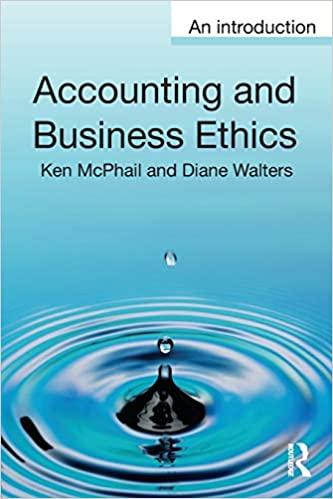Question
Camden Biotechnology began operations in September 2016. The following selected transactions relate to liabilities of the company for September 2016 through March 2017. Camdens fiscal
| Camden Biotechnology began operations in September 2016. The following selected transactions relate to liabilities of the company for September 2016 through March 2017. Camdens fiscal year ends on December 31. Its financial statements are issued in April. |
| 2016 |
| a. | On September 5, opened checking accounts at Second Commercial Bank and negotiated a short-term line of credit of up to $29,000,000 at the banks prime rate (9.5% at the time). The company will pay no commitment fees. |
| b. | On October 1, borrowed $26 million cash from Second Commercial Bank under the line of credit and issued a five-month promissory note. Interest at the prime rate of 9% was payable at maturity. Management planned to issue 10-year bonds in February to repay the note. |
| c. | Received $3,900 of refundable deposits in December for reusable containers used to transport and store chemical-based products. |
| d. | For the SeptemberDecember period, sales on account totaled $4,410,000. The state sales tax rate is 3% and the local sales tax rate is 3%. (This is a summary journal entry for the many individual sales transactions for the period.) |
| e. | Recorded the adjusting entry for accrued interest. |
| 2017 |
| f. | In February, issued $25 million of 10-year bonds at face value and paid the bank loan on the March 1 due date. |
| g. | Half of the storage containers covered by refundable deposits were returned in March. The remaining containers are expected to be returned during the next six months. |
| Required: |
| 1. | Prepare the appropriate journal entries for 2016 and 2017 transactions. (If no entry is required for a transaction/event, select "No journal entry required" in the first account field. Enter your answers in whole dollars.) 1 On September 5, opened checking accounts at Second Commercial Bank and negotiated a short-term line of credit of up to $29,000,000 at the banks prime rate (9.5% at the time). The company will pay no commitment fees.
2 On October 1, borrowed $26 million cash and issued a five-month promissory note. Interest at the prime rate of 9% was payable at maturity. Management planned to issue 10-year bonds in February to repay the note.
3 Received $3,900 of refundable deposits in December for reusable containers used to transport and store chemical-based products.
4 For the SeptemberDecember period, sales on account totaled $4,410,000. The state sales tax rate is 3% and the local sales tax rate is 3%.
5 Recorded the adjusting entry for accrued interest.
6 In February, issued $25.0 million of 10-year bonds.
7 Record the payment of the bank loan due on March 1.
8 Half of the storage containers covered by refundable deposits were returned in March. The remaining containers are expected to be returned during the next six months.
| ||||||||||||||||||||||||
Step by Step Solution
There are 3 Steps involved in it
Step: 1

Get Instant Access to Expert-Tailored Solutions
See step-by-step solutions with expert insights and AI powered tools for academic success
Step: 2

Step: 3

Ace Your Homework with AI
Get the answers you need in no time with our AI-driven, step-by-step assistance
Get Started


